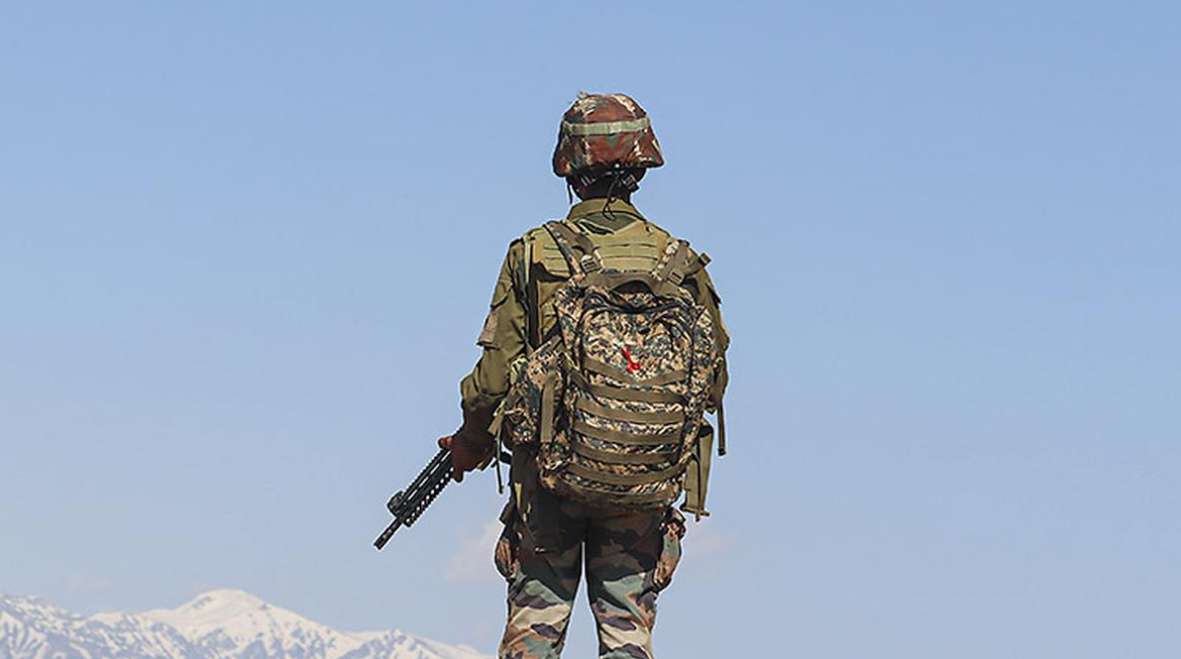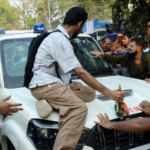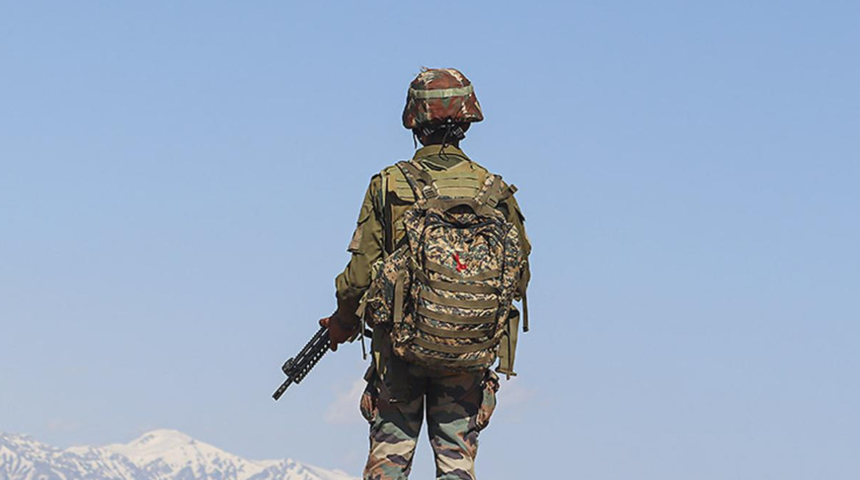Introduction
The Terrorists ongoing conflict in Jammu and Kashmir (J&K) remains one of the most challenging security issues facing India. Since the partition in 1947, the region has been a contested area, claimed by both India and Pakistan. Over the decades, the area has seen intense violence and conflict, primarily due to the activities of various terrorist groups. The Indian Army and security forces have been engaged in continuous operations to maintain peace and security in the region. On the night of August 28-29, 2024, an encounter between security forces and terrorists took place in the Rajouri district of Jammu and Kashmir, resulting in the elimination of three terrorists. This event is a significant development in the ongoing fight against terrorism in the region.
Background of the Conflict in Jammu and Kashmir
The roots of the conflict in Jammu and Kashmir are deeply entrenched in the partition of India in 1947. The region, a princely state at the time, became a flashpoint between newly independent India and Pakistan. The subsequent wars and skirmishes between the two countries further complicated the situation. Over the years, Jammu and Kashmir has become a hub for various terrorist organizations, many of which are believed to be backed by external entities.
In response, the Indian government has deployed a significant number of security forces in the region, including the Indian Army, Central Reserve Police Force (CRPF), and Jammu and Kashmir Police. These forces are engaged in counter-terrorism operations, often in difficult and hostile environments. The encounter in Rajouri is just one of many such operations aimed at curbing terrorism in the region.
The Encounter: A Detailed Account
Intelligence Gathering and Planning
The encounter in Rajouri district was not a random event; it was the result of careful planning and intelligence gathering. In the days leading up to the operation, security agencies received specific inputs indicating the presence of terrorists in the area. The intelligence suggested that these terrorists had recently infiltrated across the Line of Control (LoC) and were planning to carry out attacks on security installations and civilian targets.
Based on this intelligence, a joint operation was planned by the Indian Army, Jammu and Kashmir Police, and other security agencies. The operation was to be carried out in the dense forests of Rajouri, a region known for its challenging terrain and thick vegetation, which provides natural cover for terrorists.
The Operation Begins
On the night of August 28, 2024, the operation was set in motion. Security forces cordoned off the suspected area and began a search operation. The aim was to flush out the terrorists while minimizing any potential collateral damage. The operation was launched under the cover of darkness, a common tactic used in counter-terrorism operations to maintain the element of surprise.
As the security forces advanced, they encountered resistance from the terrorists, who were heavily armed and well-prepared. A fierce gun battle ensued, with both sides exchanging fire. The dense forest and rugged terrain made the operation even more challenging for the security forces, but they maintained their positions and continued to engage the terrorists.
The Intensity of the Encounter
The gun battle continued for several hours, with the sound of gunfire echoing through the night. The terrorists, realizing they were outnumbered, attempted to break the cordon and escape. However, the security forces had anticipated this move and had already tightened the cordon, leaving no escape routes for the terrorists.
Despite the challenging conditions, the security forces remained resolute and methodically closed in on the terrorists. The encounter was intense, with the terrorists using every tactic at their disposal to evade capture or elimination. However, the security forces, equipped with superior training and firepower, eventually gained the upper hand.
By the early hours of August 29, 2024, the encounter had concluded with the neutralization of three terrorists. The bodies of the terrorists were recovered, along with a significant cache of arms and ammunition. The recovered weapons included AK-47 rifles, grenades, and other warlike stores, indicating that the terrorists were well-equipped and prepared for a prolonged engagement.
The Aftermath and Immediate Impact
Identification of the Terrorists
Following the encounter, security forces began the process of identifying the killed terrorists. Preliminary investigations suggested that the terrorists were affiliated with a Pakistan-based terrorist organization, though their exact identities were not immediately confirmed. The security forces are conducting further investigations to establish their identities and any connections they may have had with other terrorist networks operating in the region.
Security Forces’ Response
The successful operation in Rajouri is a significant achievement for the Indian security forces. It demonstrates their readiness and capability to respond to terrorist threats in a timely and effective manner. The operation also highlights the importance of intelligence gathering and coordination between various security agencies in conducting successful counter-terrorism operations.
In the wake of the encounter, security forces have intensified their operations in the region, conducting additional searches and combing operations to ensure that no other terrorists are hiding in the area. The Rajouri district, like many other areas in Jammu and Kashmir, remains under heightened security to prevent any retaliatory attacks by terrorist groups.
Challenges Faced During the Operation
Difficult Terrain and Weather Conditions
One of the most significant challenges faced by the security forces during the operation was the difficult terrain. Rajouri district, located in the Pir Panjal range, is characterized by dense forests, steep hills, and rugged terrain. These geographical features provide natural cover for terrorists, making it difficult for security forces to conduct operations.
Additionally, the weather conditions in the region can be unpredictable, with sudden changes in temperature and visibility. The operation in Rajouri took place at night, adding to the challenges faced by the security forces. Despite these difficulties, the forces were able to carry out the operation successfully, thanks to their training and experience in conducting such operations in hostile environments.
Infiltration Across the Line of Control
Another challenge that security forces in Jammu and Kashmir regularly face is the issue of infiltration across the Line of Control. Despite the presence of a multi-tiered security grid and regular surveillance, terrorists continue to find ways to infiltrate into Indian territory. These infiltrations are often facilitated by the rough terrain and well-established infiltration routes.
The encounter in Rajouri is believed to have involved terrorists who had recently infiltrated from across the LoC. The continued threat of infiltration poses a significant challenge to security forces, who must remain vigilant at all times to prevent such incidents.
The Broader Security Situation in Jammu and Kashmir
Ongoing Terrorist Activities
The encounter in Rajouri is part of a broader pattern of terrorist activities in Jammu and Kashmir. Despite the efforts of the Indian government and security forces to bring peace and stability to the region, terrorism remains a persistent threat. Various terrorist organizations, many of which are believed to be backed by external entities, continue to operate in the region, carrying out attacks on security forces and civilians.
These terrorist activities are often aimed at destabilizing the region and creating a sense of fear and insecurity among the local population. However, the security forces’ continued efforts to neutralize terrorists and dismantle their networks have prevented many potential attacks and saved countless lives.
Government Initiatives for Peace and Development
In addition to the security operations, the Indian government has been working on various initiatives aimed at improving the socio-economic conditions in Jammu and Kashmir. These initiatives include infrastructure development, education, healthcare, and employment opportunities for the local population. The goal is to address the root causes of unrest and create an environment conducive to peace and stability.
While these initiatives have shown some positive results, the ongoing threat of terrorism continues to pose a significant challenge. The government and security forces must work together to ensure that the gains made in development are not undermined by terrorist activities.
The Role of the Local Population
Cooperation with Security Forces
The local population in Jammu and Kashmir plays a crucial role in supporting the security forces in their operations. In many cases, it is the locals who provide the intelligence inputs that lead to successful operations. The cooperation between the security forces and the local population is vital in the fight against terrorism in the region.
In the case of the Rajouri encounter, it is believed that local intelligence played a key role in identifying the presence of terrorists in the area. This cooperation is essential for the success of counter-terrorism operations and for ensuring the safety and security of the region.
Impact on Daily Life
However, it is also important to recognize the impact that ongoing military operations have on the daily lives of the local population. Encounters like the one in Rajouri often lead to disruptions in daily life, with curfews imposed, schools closed, and businesses shut down. The sound of gunfire and explosions, as well as the sight of heavily armed soldiers, can be unsettling for the residents, especially for children and the elderly.
Despite these challenges, the majority of the local population supports the efforts of the security forces to maintain peace and security in the region. They understand that these operations are necessary to eliminate the threat of terrorism and to ensure a safer future for everyone in Jammu and Kashmir.
The Strategic Importance of Rajouri District
Proximity to the Line of Control
Rajouri district holds strategic importance due to its proximity to the Line of Control. The district has historically been a hotspot for terrorist activities and infiltration attempts. Its location in the Pir Panjal range makes it a challenging area to secure, but also a critical one in the overall security strategy for Jammu and Kashmir. 
History of Terrorist Activities
Rajouri has a long history of terrorist activities, with numerous encounters and operations taking place in the region over the years. The district’s dense forests and rugged terrain have made it an ideal hiding place for terrorists, and security forces have had to conduct numerous operations to flush out these elements.
The recent encounter in Rajouri is a continuation of these efforts and highlights the ongoing challenges faced by security forces in securing the region. The successful neutralization of terrorists in this encounter is a significant achievement, but it also underscores the need for continued vigilance and preparedness.
The International Dimension
Cross-Border Terrorism
The encounter in Rajouri once again brings to the forefront the issue of cross-border terrorism. India has consistently raised concerns about the role of external entities in supporting and facilitating terrorist activities in Jammu and Kashmir. The infiltration of terrorists across the Line of Control is a clear example of this ongoing threat.
The international community has recognized the need to address cross-border terrorism and has called for greater cooperation in combating this menace. However, the situation on the ground remains challenging, with terrorists continuing to find ways to infiltrate and carry out attacks.
Diplomatic Efforts
In addition to military operations, the Indian government has also been engaged in diplomatic efforts to address the issue of terrorism in Jammu and Kashmir. These efforts include engaging with international partners, raising the issue at global forums, and seeking greater cooperation in combating terrorism.
The encounter in Rajouri is a reminder of the complex nature of the conflict in Jammu and Kashmir and the need for a multifaceted approach to address it. Military operations are essential, but they must be complemented by diplomatic, economic, and social efforts to bring lasting peace to the region.
Conclusion
The encounter in Rajouri district on the night of August 28-29, 2024, is a significant event in the ongoing fight against terrorism in Jammu and Kashmir. The successful neutralization of three terrorists in this operation is a testament to the effectiveness and preparedness of the Indian security forces. However, the encounter also highlights the continued challenges posed by terrorist activities in the region, including the difficult terrain, the threat of infiltration, and the impact on the local population.
As the situation in Jammu and Kashmir continues to evolve, it is essential for the Indian government and security forces to remain vigilant and adaptable. The fight against terrorism in the region is far from over, and it requires sustained efforts on multiple fronts to ensure peace and security.
The people of Jammu and Kashmir, like the rest of India, deserve to live in an environment free from the fear of terrorism. The continued efforts to neutralize terrorists and dismantle their networks are crucial in achieving this goal. As the country moves forward, it is essential to remember the sacrifices made by the security forces and to honor their commitment to protecting the nation. The encounter in Rajouri is a stark reminder of the ongoing challenges, but it is also a beacon of hope for a more secure and peaceful future. ALSO READ:- Anubhav Sinha on ‘IC 814: The Kandahar Hijack’: A Commitment to Truth over Glorification





